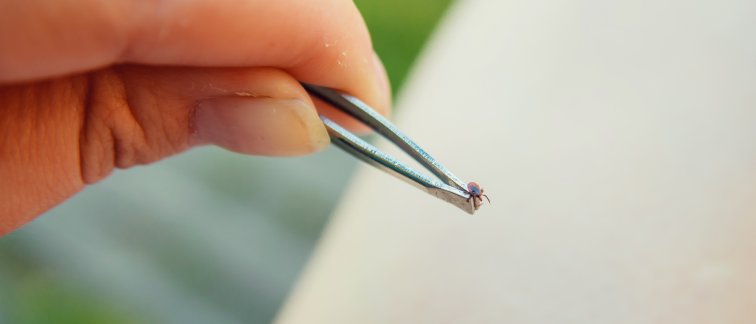If you have been bitten by a tick, you can recognize it by a protruding black knob about the size of a match head. Every year, a total of one and a half million Dutch people are bitten by ticks. Can a tick bite hurt? And what do you do if you find one on your body? Joppe Hovius, Professor of Infectious Diseases at Amsterdam UMC, explains.
A tick is a small spider-like creature. Ticks bite animals and humans so they can suck their blood. That is their food. Joppe Hovius stresses the importance of removing a tick as soon as possible. Hovius is professor of infectious diseases at Amsterdam UMC and affiliated with and founder of the Amsterdam Multidisciplinary Lyme Disease Center. The earlier, the smaller the chance of contracting Lyme disease. "You can easily do this yourself with tweezers or tick forceps." It is harmless if the head of the animal remains in the skin; it will come out on its own, just like a splinter.
Lyme disease
If a biting tick carries the Borrelia bacteria, people can contract Lyme disease. The chance of contracting Lyme after a tick bite is on average 2 to 3 percent, despite the fact that 20 percent of ticks are infected with the Lyme bacteria. If you remove the tick quickly (within a few hours) this chance halves. If you leave the tick in place until the tick fills up completely, the chance of getting Lyme doubles. About 27.000 people contract Lyme disease each year. If you have a tick bite, you could potentially become quite ill from it.
"A tick does everything it can to avoid being discovered," Prof. Hovius says. , "Therefore, it hides with some regularity in the cavities of the body, for example, your armpits or buttock crevice or the hairy scalp." According to the professor, the tick does this to avoid being scratched or wiped away. "The tick’s saliva also contains all kinds of substances that prevent itching and pain."
In most people, Lyme disappears after treatment with antibiotics, they recover completely, but some still struggle with the symptoms for a long time. According to the RIVM, this concerns about 1.000 to 1.500 people. Lyme disease can be recognized by a red ring or a red spot around the site of the bite. It can appear up to three months after the bite. Not everyone develops the same symptoms. Often people have fever and possibly muscle and joint pain. Joint, skin, nerve or heart problems can also occur.
Multiple bites
According to the National Institute for Public Health and the Environment (RIVM), about one in five people have multiple bites at the same time. "If you find a tick on your body, check the rest of your body extra carefully," the institute advises.
In Drenthe, people are proportionally most at risk of being bitten by a tick. The critters mainly strike in June and July. In adults they bite mainly on the legs, in children mainly on the head and neck, reports the RIVM.
Source: read the original (Dutch) article by www.ad.nl here.
Read our previously published articles about Lyme disease:

